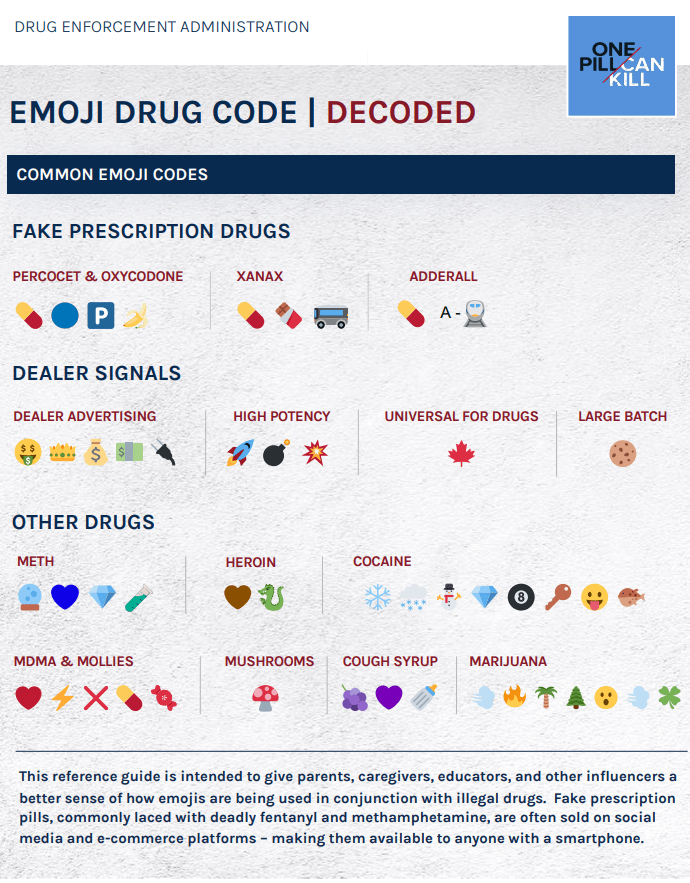As the rise of social media has increased connection among teens and young adults, social media platforms can now be used for a more dangerous purpose: the buying and selling of illegal drugs. Using a secret code of emojis and lingo, dealers can avoid being detected and banned on platforms such as Snapchat and Instagram.
In 2021, the Drug Enforcement Agency (DEA) published an “emoji drug code” guide to decipher the emoticon language used in conversations about the selling and buying of drugs. According to the DEA, prescription drugs sold on social media platforms have a high chance to be laced with deadly substances. This can often be the cause of counterfeit drugs, as 26% of counterfeit tablets tested by the DEA in 2021 had a lethal dose of fentanyl. Awareness of emojis that can indicate drug use can help parents detect drug use in their children before it is too late.
For example, an electrical plug or crown emoji can indicate that the social media user is selling drugs. A snowflake or diamond emoji represents cocaine, and a pill or chocolate bar emoji may be code for Xanax. The full graphic from the DEA representing commonly used emojis in drug transactions is below.
According to the DEA, use of these emojis alone in social media and text exchanges should not indicate drug use, but “coupled with a change in behavior, change in appearance, or significant loss/increase in income should be a reason to start an important conversation.” Recognizing some of the seemingly harmless emojis from this list could make a difference in preventing an accidental overdose or a substance use disorder before it has a chance to start.





